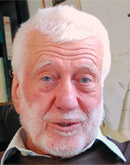

Günther Feuerstein
*21. 10. 1925 – Wien, Austria
†4. 12. 2021 – Wien, Austria
Biography
Günther Feuerstein was an Austrian architect and theorist based in Vienna. In 1951, he graduated in architecture from the Vienna University of Technology, and in 1956, he became a licensed architect. From 1958 to 1962, he worked with Karl Schwantzer and participated in projects such as the Austrian pavilion for Expo 1958 in Brussels and the Wifi building in Vienna. From 1962 to 2000, he operated a “Studio for Design, Planning, and Research”. Between 1965 and 1967, he developed a dissertation on the topic “Architectural Archetypes,” which he revised ten years later (1974-76). From 1961 to 1968, he was an assistant to Karl Schwantzer at the Institute of Theory and Design of Buildings at the Vienna University of Technology. He organized “Club Seminars for Architecture Students”, where collaborative experimental groups emerged: Coop Himmelb(l)au, Haus-Rucker-Co, and Zünd-up. In addition, he was in charge of a workshop for designing experimental buildings, held every summer with 15 students. Due to his lectures, Günther Feuerstein was one of the catalysts for the further development of Vienna's architecture in the 1960s. As part of his lectures, he invited guests that had not been approved by the dean's office of the University of Technology, including Walter Pichler. Following this disregard, Otto Mühl was immediately dismissed after giving a lecture within his lecture series.From 1970 to 1972, he organized extracurricular evenings “O.O. - Open Office” in his studio in Weiden. It was a discussion forum for students and professionals transcending the field of architecture. From 1973 to 1996, he served as a professor of spatial design at the University of Art and Industrial Design in Linz.
The English translation is powered by AI tool. Switch to Czech to view the original text source.












